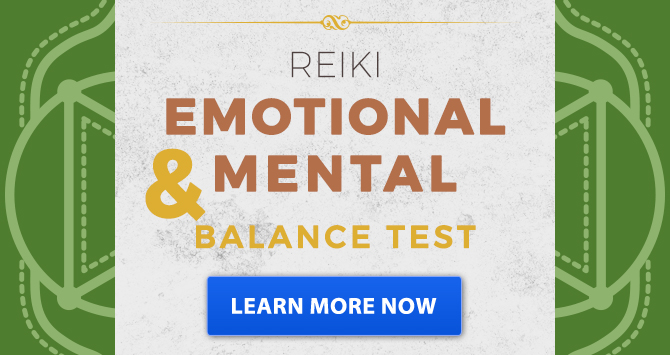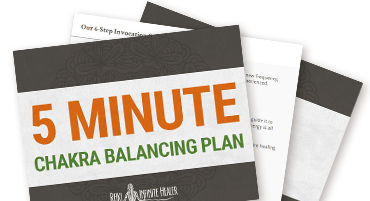The Healer's Guide To Understanding Emotional Awareness

In one of our previous posts, I covered a topic that was extremely dear to my heart.
But I wasn’t able to go in-depth into certain things…
…namely, that building awareness for emotional trauma is extremely difficult.
I’ve been healing people for the last 10 years of my life…so I’ve developed a process for diagnosing and treating the problems as soon as I see them.
However, not many people ‘get it’ when they hear what I say…so in this week’s post, I want to break down simple ways to identify certain stress patterns or signs of emotional trauma.
Note: my method has been tested through the years and has required several changes – so it is likely that what you are about to see may change over time as I make edits to improve and refine the process.
But before we go into the different ways people express their emotional traumas, let’s do a quick review of what Awareness truly means.
Awareness
Awareness is the simply the first step to any kind of healing, awakening, or activating. Without a sense of awareness, you will be lost and without a map for what to do next.
Whether you’re a healer or someone looking for help, the more that you are put into situations that require you to heighten your awareness – paying attention to your Sacral Chakra – for example, the easier it will be to build your awareness.

Think of it like a muscle…awareness can and should be trained like one.
Why? Well…your Reiki, Chakras, and Aura depend on your level of awareness. Otherwise, you may think that you’re doing something to heal...when you’re actually not.
Let’s say you’re a firefighter and you’re combatting a huge forest fire. If you immediately try to hose it down, you may make it worse!
So you first need to stop and assess the situation. This will train you to view your troubles and other people’s troubles in an objective manner…
…and allow for greater healing to occur.
Note: the following method is simply my own and may need some tweaking to work for you. I typically follow this process in order to diagnose and pinpoint a client’s issue.
You can do this yourself – or, if you wish, try to diagnose someone else’s pain (with their consent, of course.)
Now, the line between each of these different types is extremely thin – in most cases, they overlap each other, so it may take some time to understand the nuance between certain types. For accessibility, I’ve separated them to make them easier to follow.
(I also have an Emotional & Mental Balance Test that you can take – it’s the fastest, most effective way to be aware of AND build an understanding of what to do next…it’s completely 100% free. You can go over here to grab it.)
Aversion & Avoidance
The first sign of emotional trauma is the feeling that someone is avoiding or averting from a particular issue.

For myself, it may be that I’m particularly unfocused on a certain day or that I just don’t want to be around a certain group of people.
This can lead to things like food cravings, oversleeping, irritable moods, etc…and are a clue for me to look inward.
In about 90% of cases now, I catch myself before the pain grows.
Similar cases arise in my clients – they come to me and say, “I don’t know…I just feel…a little off.”
Sometimes it takes some prying (after all, they’re avoiding it for a reason) to really get at what is deeply affecting them, but remember that healing is not about you.
Healing is about who you are healing for. If it is for yourself, then it is for you. However, if it is for someone else, remember that they are the ones who need to build awareness.
Your job as a healer is to help bring them to that point.
Furthermore, remember that the first step is ALWAYS awareness. Don’t devise a solution yet if you haven’t diagnosed the problem! It’s easy to make hasty decisions…
…but all good healing solutions take time to develop.
Confrontational Behavior & Projection
Have you been lashing out at people or taking out your pain in non-constructive ways?
For people who don’t try to avoid their pain, they may instead project it onto others in various ways.
This can include:
- Engaging in conflicts randomly
- Negative self-talk
- Poor hygiene
- Cutting oneself off from support
- And much more.
This projection and confrontational behavior makes one believe that outside forces are the source for their troubles.
And while this may be true in some cases…in many others, the source of the pain comes from something within.
It’s easy to blame someone else or point the finger elsewhere, but this is just a tactic to distract oneself from the truth.

In Avoidance/Aversion cases, the sufferer is running away from their problems. In a Confrontational/Projection case, the sufferer is trying to distract their attention from the problem.
How can one learn to be aware of this issue?
For self-healing, I plan out a time to have an honest conversation and investigation of my behaviors, thoughts, and priorities at the moment.
I like to talk to myself outloud as well, since this will make it easier to exhale the truth. The more you bottle your thoughts in your head, the more clogged and stagnant your energy becomes.
If need be, sometimes I like to write out my thoughts or even draw out what I feel has been hurting me.
Through these self-examinations, I learned that you can someone do the same thing.
Simply allow space for them to write out their thoughts. Be free of any and all judgment.
If they or you feel any emotional outburst or strong emotion, assure that it is okay to be feeling a certain way, and that healing happens by first building awareness.
different methods to help you diagnose yourself and others.
Some people prefer to express their conversations through dance, yoga, or even sleeping!
Just remember that you can easily fall into a trap by avoiding the problem entirely. If you do, you’ll never be able to experience the true healing you desire.
If you want a quick way to address these issues, try out my FREE Emotional & Mental Balance Test. This will help you understand and build awareness to begin healing IMMEDIATELY. Download it here.
Experience
This one is a bit tricky to deal with and explain.
Some people avoid their problems while others project them onto others.
However, there are a small minority of people who simply try to ‘deal with it’ without ever moving on.
I call this type, ‘experience.’

Emotions are powerful forces and movers of energy that exist both here and in the Astral Plane.
However, some people can get stuck here and allow it to consume them entirely.
Common symptoms include a sense of overwhelm, decision anxiety, and even an unwillingness to hear people out.
This is extremely difficult to treat and diagnose, because in order for one to ‘experience’ the pain, one must be completely blind to the fact that it exists.
Typically, these people are the ones that do not seek help because they feel as though it is a normal part of life, rather than something they can treat to enhance their life condition.
If you are this type or you know someone who is, it will require time and patience to bring them to a state of awareness.
This is when honesty makes the biggest impact – if you make an honest attempt to address the situation and problem at hand, the sufferer will open their eyes and see what is happening to them.
In rare occasions, you may face defensiveness from yourself or the person you are trying to heal. This is quite normal as their experience may be rooted in a blockage in the energy system and may need some extra time to unblock and open up.
Passive Aggression
This type is perhaps one of the more troublesome types.
The one who uses their symptoms and channels them in a passive aggressive manner may seem similar to the Confrontational/Projection type…
…however, the difference is that the passive aggressor is completely aware of their situation, and simply chose a different route to address their pain.

This decision is detrimental to their health, as their Third Eye & Crown Chakra become exhausted trying to both simultaneously avoid and confront their problem.
For example, if you were standing on a beach and you saw that you needed to swim to an island for safety, the passive aggressor would walk alongside the sand while trying to fight the ocean.
It seems a bit wacky…but that’s precisely because it is!
To tell whether you’re suffering from this, honestly examine the way that you have been acting in front of others.
Are you being your true self? Or are you trying to signal that you need help?
These kind of questions and conversations are never easy, but I always do my best to make sure that I am honest with myself if I feel as though I am being passive aggressive.
The key takeaway here is that this individual is aware of their problem and may simply not understand the issue enough to take the necessary steps to remove it from their life.
Now, once you build an awareness…you have to understand what is triggering that specific emotion.
It may seem basic…but 95% of my clients and other healers miss this important point.
You can’t be aware of something you can’t put into words.
But once you define it…
…it is nothing to be afraid of.
The following is a list of certain emotions and common symptoms that people have. This works in tandem with the different types of ways people struggle to deal with their emotional pain and can definitely overlap as well.
However, it’s important to note that each emotion has a certain message or feeling behind it.
Pain in the body lets you know that you need healing somewhere – likewise, a certain emotional reaction means that you need to address something in your energetic field.
The quickest way to do so would be to take this Emotional & Mental Balance Test. It’s free and you’ll get the results immediately after you take it. Download it here.
Without further ado, let’s take a look at some of the different emotions and where they are most commonly located.
The Different Emotional Symptoms
Anger is one of the more noticeable emotional reactions and pains. Tensed skin, muscles, jaw, face, irregular breathing are all symptoms of anger. The Heart, Solar Plexus, and Throat Chakras are most commonly affected, but its not uncommon to see that the Sacral Chakra is also distorted.
Frustration is the signal of the passive aggressor. It may feel like anger, but doesn’t know which way to turn. Your movements and posture may become rigid. Symptoms include denial, unusually rapid speech, shrugging and averted eyes. The Third Eye and Throat Chakras seem to be most affected by frustration.
Fear may express itself in your body as a tight stomach or chest, cramps, coldness, shaking, weakness, or dizziness. It is most often caused by a tightening of the Sacral and Root Chakras.
Anxiety is a chronic state of fear.
Most people know when they have anxiety, as it tends to be recurrent. Anxiety may manifest as numbness in the wrists, clammy hands, restlessness, and sleeplessness. If left untreated, anxiety may creep into and disfigure the Heart and Throat Chakras.
Humiliation is similar to fear – except instead of draining your energy, it overtakes your energy system. Most people feel a wave of heat overcome their body when they are threatened with humiliation. You may instantly react with a hunched over posture and sunken face. This most commonly affects the Solar Plexus Chakra.
Depression feels cold and heavy. The body is lethargic and lacking in energy. Depressed people may feel cold much of the time. The body may move slowly, rigidly, or hesitantly, reflecting the condition of depression. Depression is one of the most insidious emotional burdens, as it can affect and drain the entire energy system.
These are just some of the emotional burdens that some of you and the people you are trying to heal carry.
I’ve tried my best to clear up any confusion, but remember that emotions are creatively powerful, and each individual case may reflect a myriad of different emotional pains and problems.
If you need any help figuring this process out and want to heal immediately, check out my Emotional and Mental Balance Test. I’ve designed it to pinpoint exactly what steps you need to take to make sure that you’re well protected from disease, trauma, and future pain. You can download it here.



